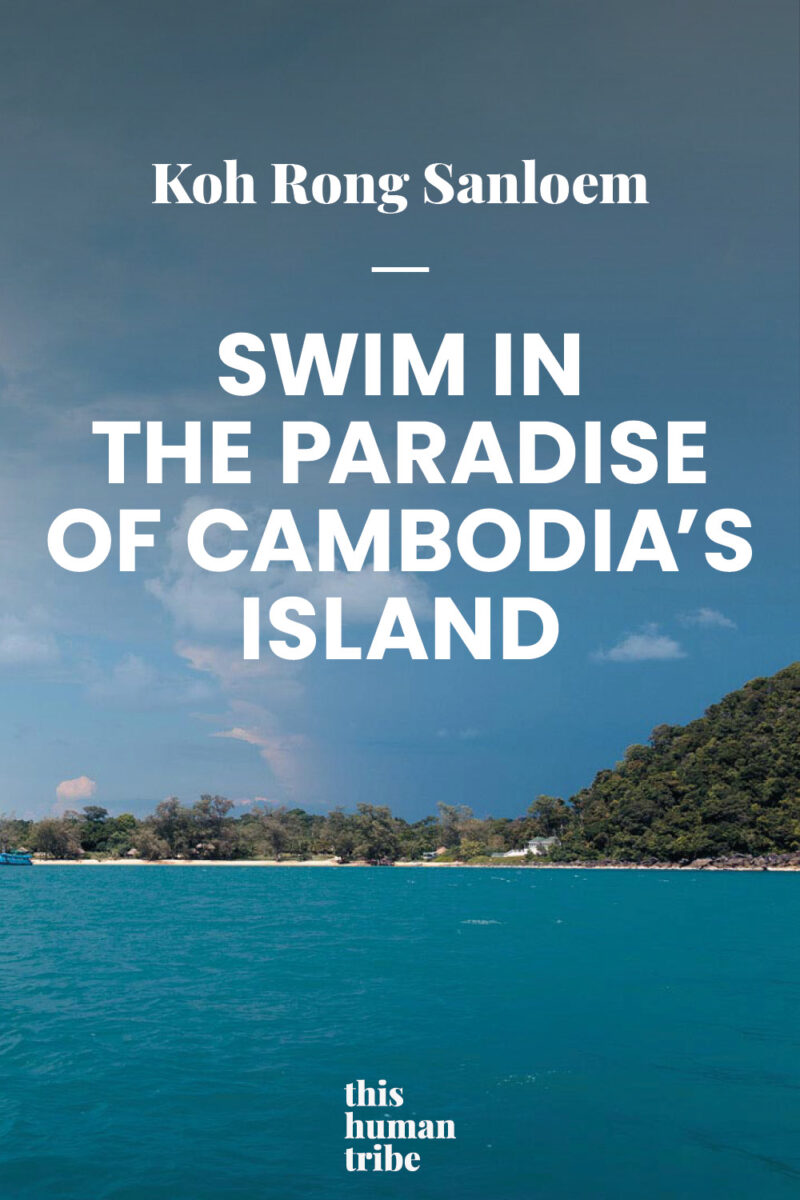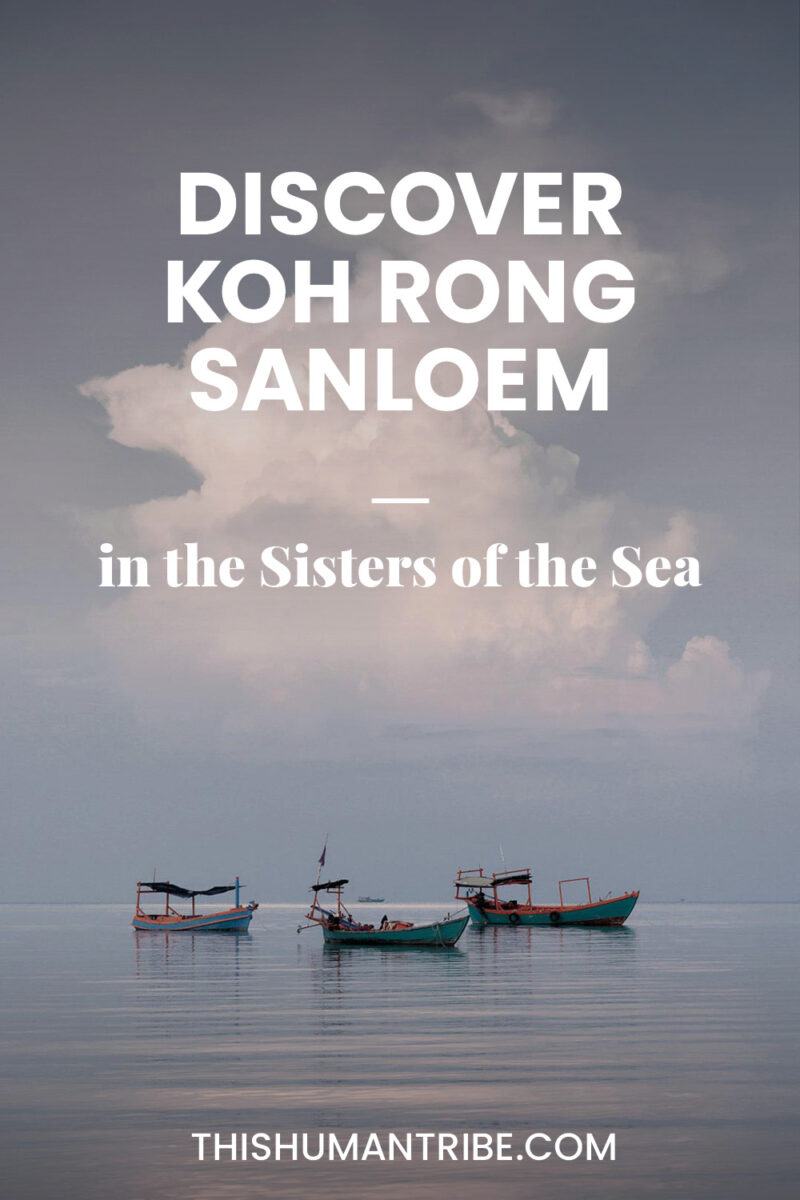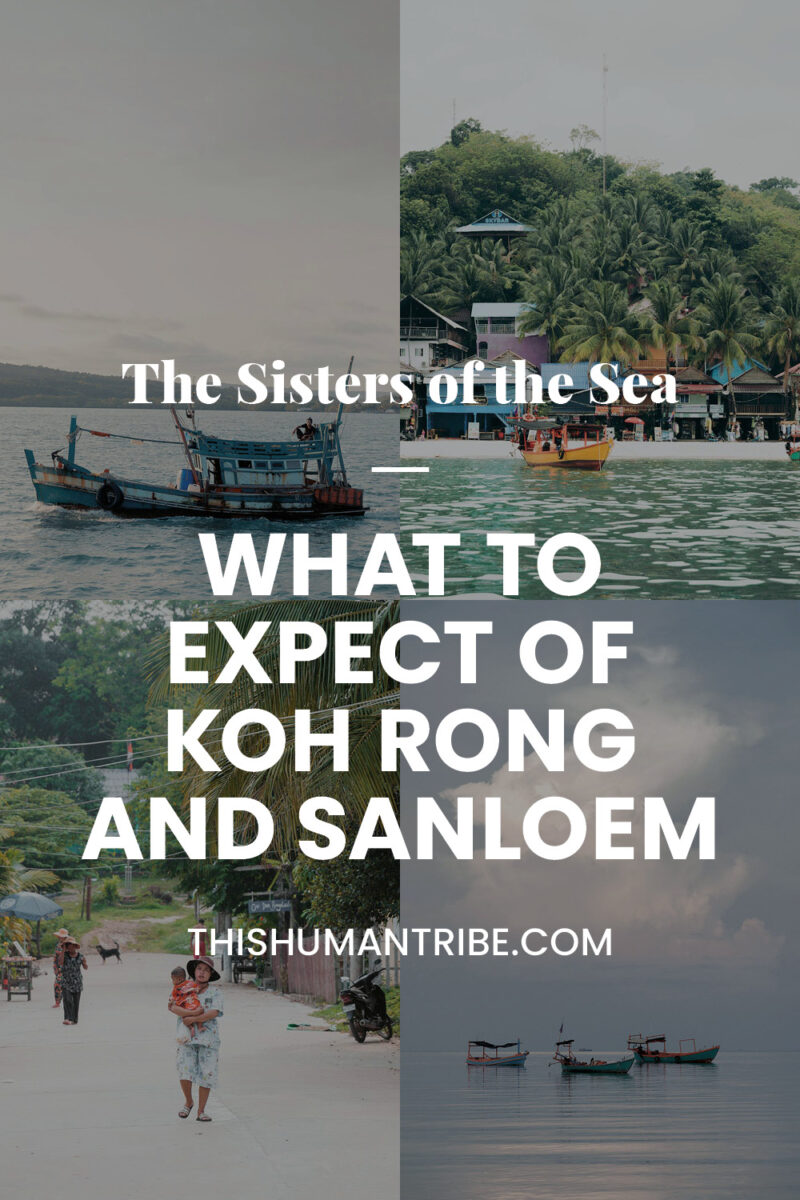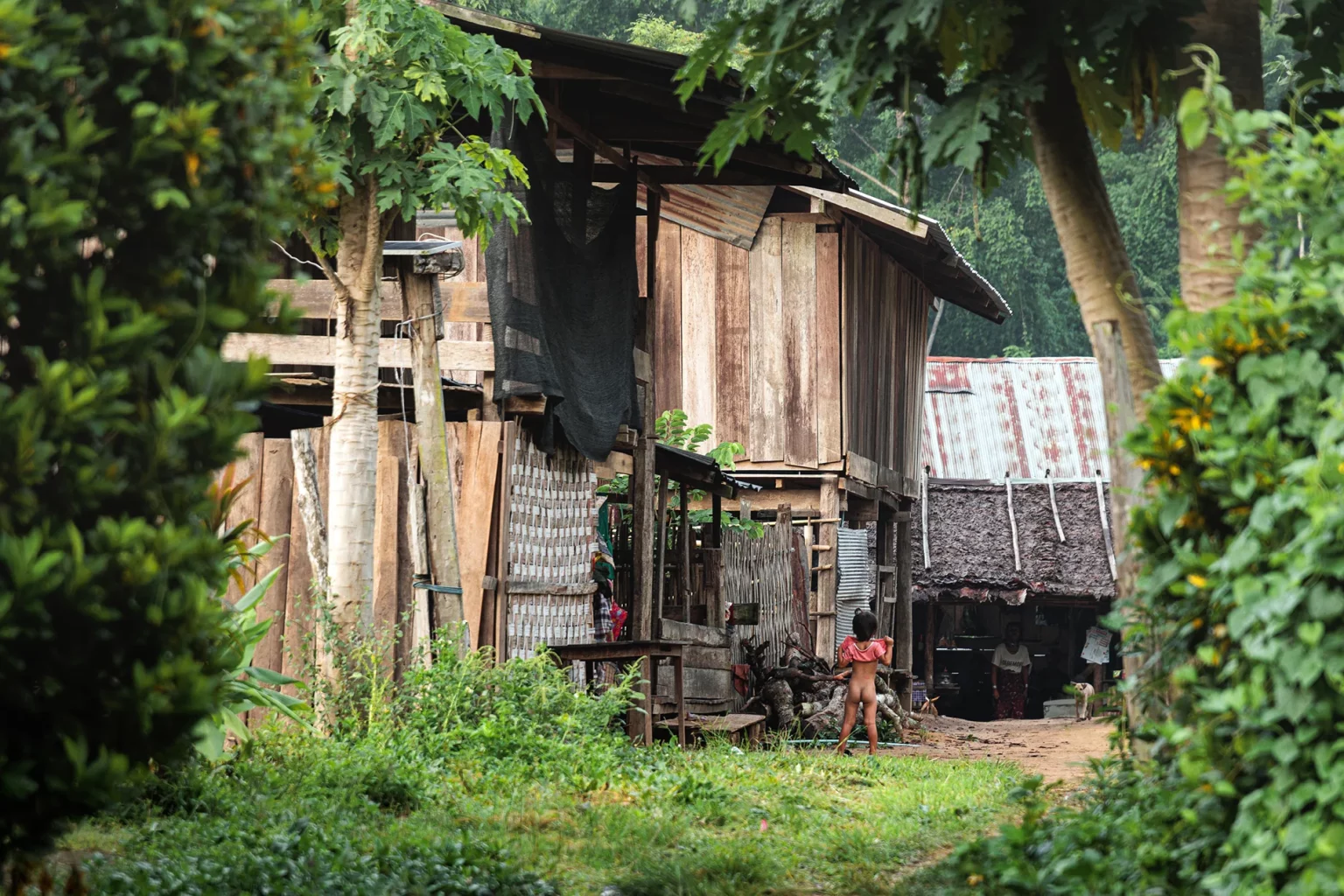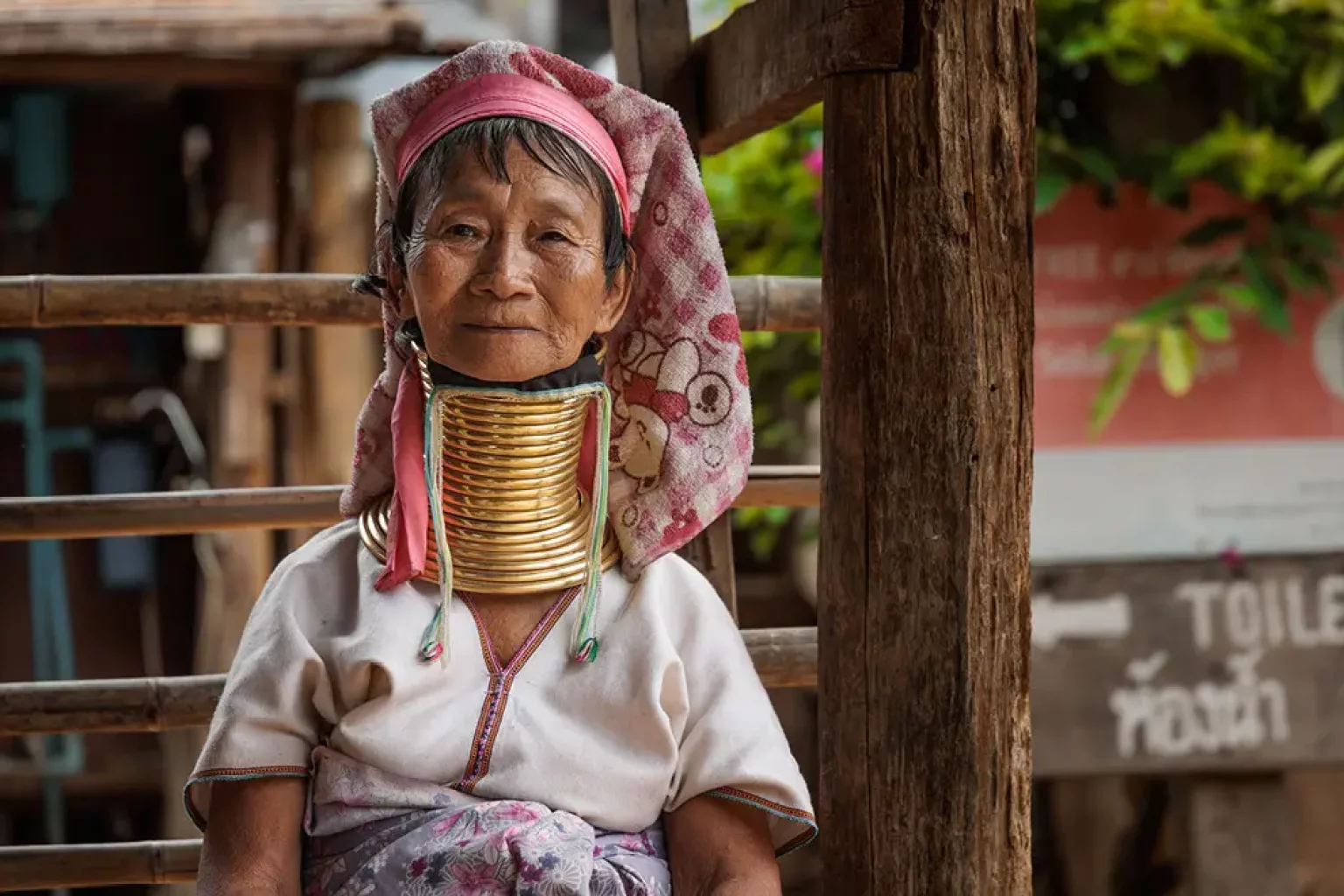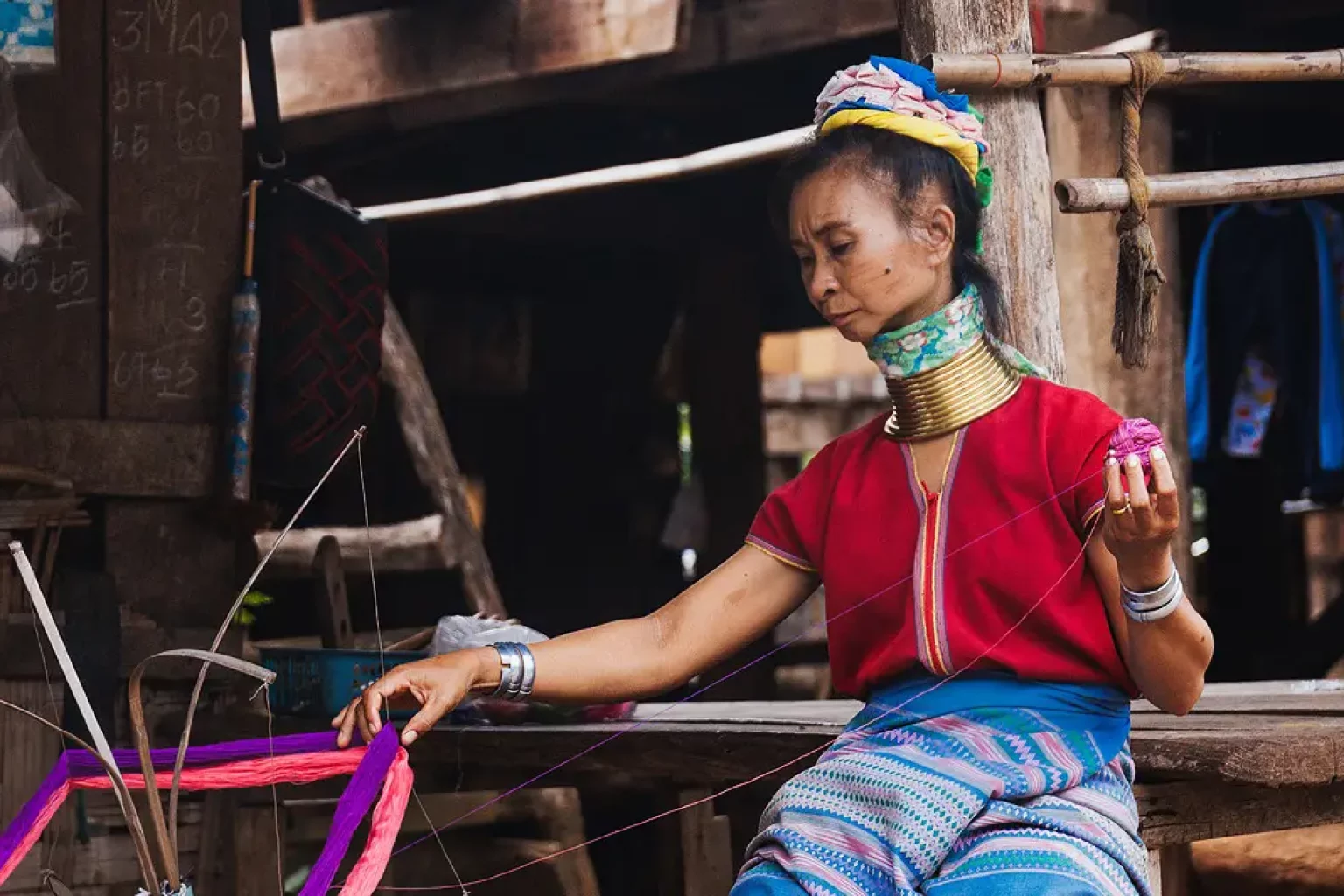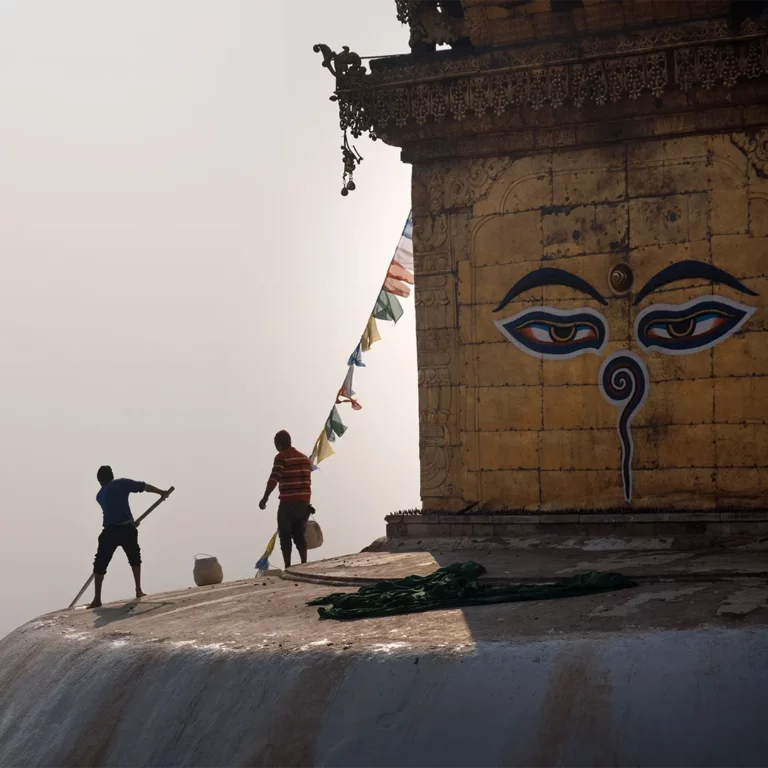South-West of Cambodia lie two islands, covered by a cloak of thick, luxuriant jungle, hills and a sandy coastline, punctuated by stretches of sandstone. Koh Rong Sanloem is nestled in the Gulf of Thailand along with its bigger sister, Koh Rong. Both have clear beaches and heavenly waters in which to dive and discover the rich marine life, sometimes amongst mangroves.
These waters are home to coral reefs, sea grass, sea turtles, seahorses, dolphins, dugongs, glowing plankton and many more species, fundamental for the preservation of life in and around the island.
Koh Rong Sanloem
In its mere 24.5 km2, Sanloem is a special place, one that will be hard to forget, frozen in a time where life was simpler.
Our little island has much to offer to travellers, especially to those who love discovering a place outside of the touristic tracks, it is off grid and can provide a truly unique experience.
Off the grid, not only so to speak, but for real. It relies on independent generators to produce electricity, and tanks to distribute water. In some parts of the island, this results in scheduled power cuts throughout the day.
There are a few companies who drive ferries to Sanloem once or twice a day. But if you want to catch an early ride, if you got off at the wrong island, don’t despair. You still have an ace up your sleeve to get there. There is a supply boat that runs twice a day. The captain and crew are used to picking up anyone who needs a lift for a much smaller sum than a speed boat ticket.
Then, being a supply boat, it’s way slower than the ferry. But you’ll trade your time for an authentic experience with the locals, getting a front row seat to the circus that is life on an island.
The boat stops at every beach, and watching young, skilled longboat drivers approaching the side of the boat to start unloading the goods they ordered, is an oddly satisfying sight. They circle the boat like little ones looking for their mother, and once contact is made, a dance begins, a dance of arms, wooden beams, beer crates and coconuts.
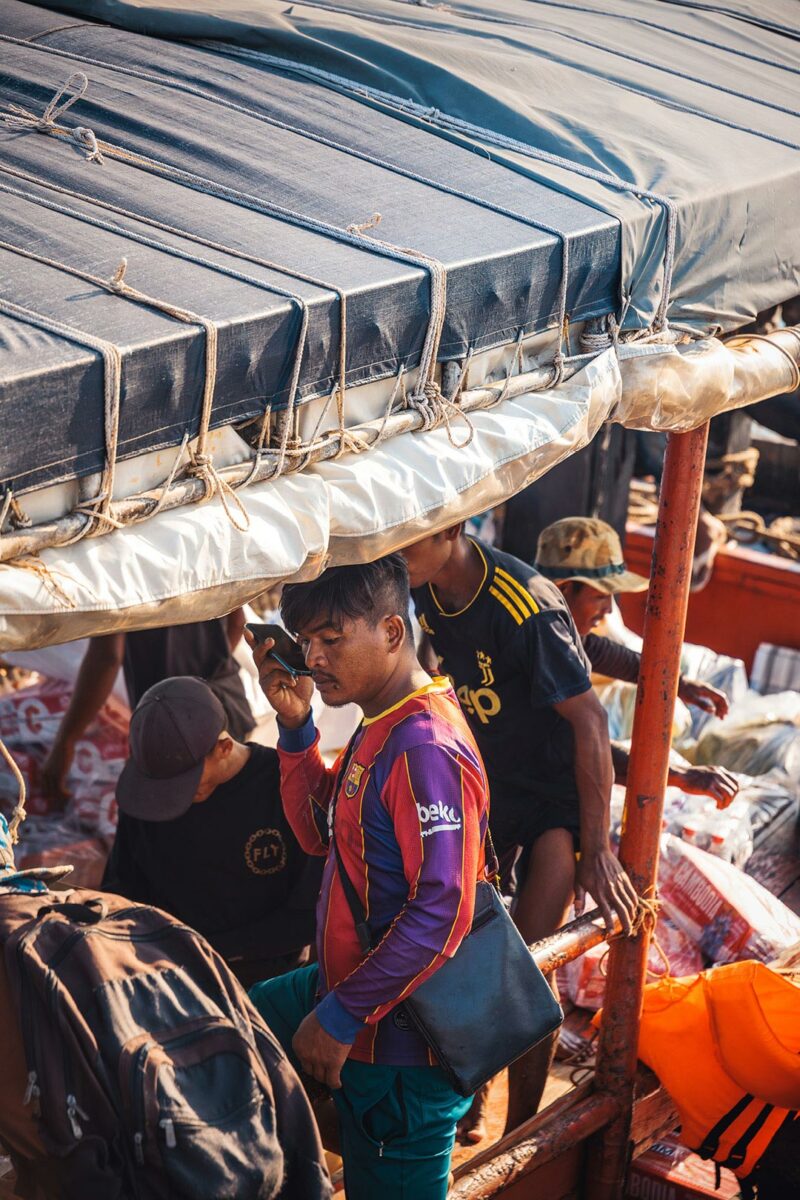
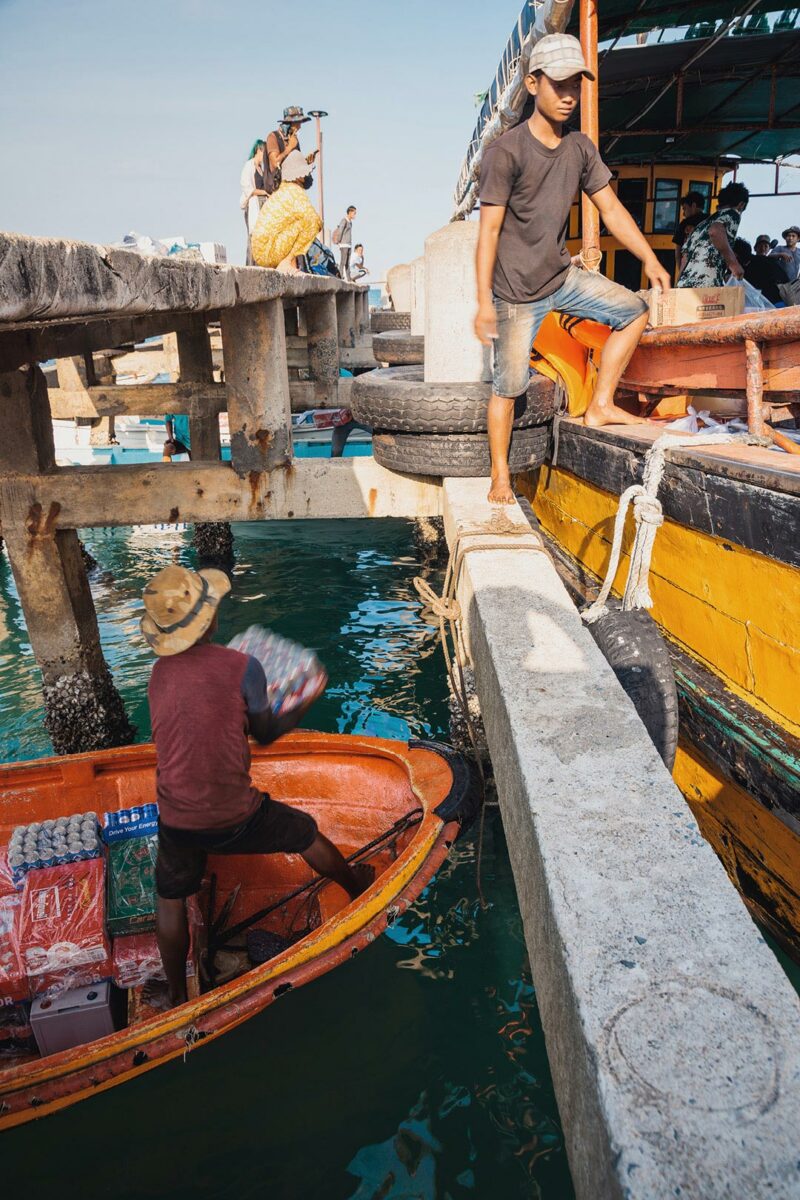
The off-loaders are small, agile and incredibly fast. Some of them balancing on the prow, with the rough sea beneath and a cigarette between their lips. Their bare arms laden with things to take back who knows where.
About the island
Once on the island, there is a great variety of things to do, places to see and experiences to have. But Sanloem wins you over slowly, on the tip of the toes, with the silence of the early morning, the laughter of the neighbours and the smiling faces of those who recognise you after only a few days of being there.
The best thing you can do is take the time to explore the island. Let randomness make some of the decisions and you’ll be in for a treat. Almost anywhere, but here especially, chance rules and with it, a garden of unexpected possibilities will bloom.
Saracen Bay and the lighthouse
Saracen Bay it’s the most touristic part of the island. There, you’ll find quite a few resorts, bungalows, restaurants and snorkelling/diving centres. The sand here is extremely white and thin, different from the northern part where it veers toward gold. This is where most ferry companies, departing from Sihanoukville, stops, with only one of them going also to M’Pai Bay at the moment.
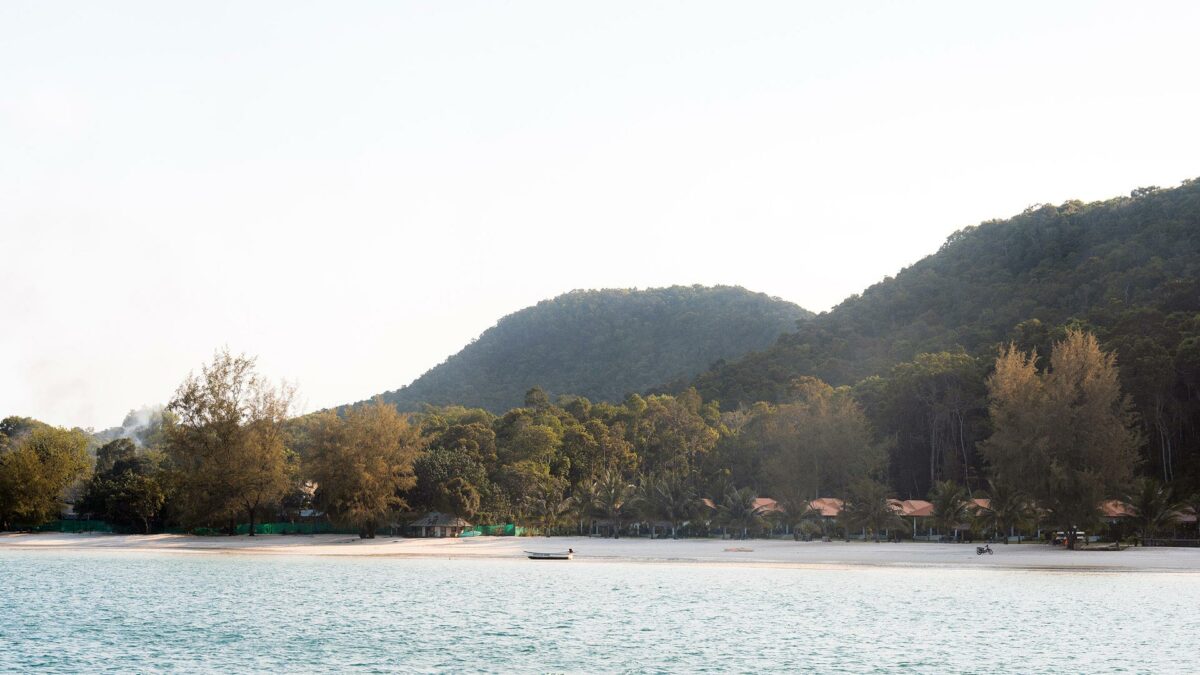
You can go from Saracen Bay to the opposite side of the island, to Lazy Beach, through a jungle path. But make sure to double check with the locals whether it’s still open or not. Since the pandemic, for lack of tourism or new ways opening up, things were changing quite often.
To reach other parts of the island you can rent a long boat, or hop on the supply boat. We did both at different moments, but we recommend the latter if you have a taste for adventure.
With a long boat we went to a little stretch called Twilight Beach and, from there, we hiked to the lighthouse.
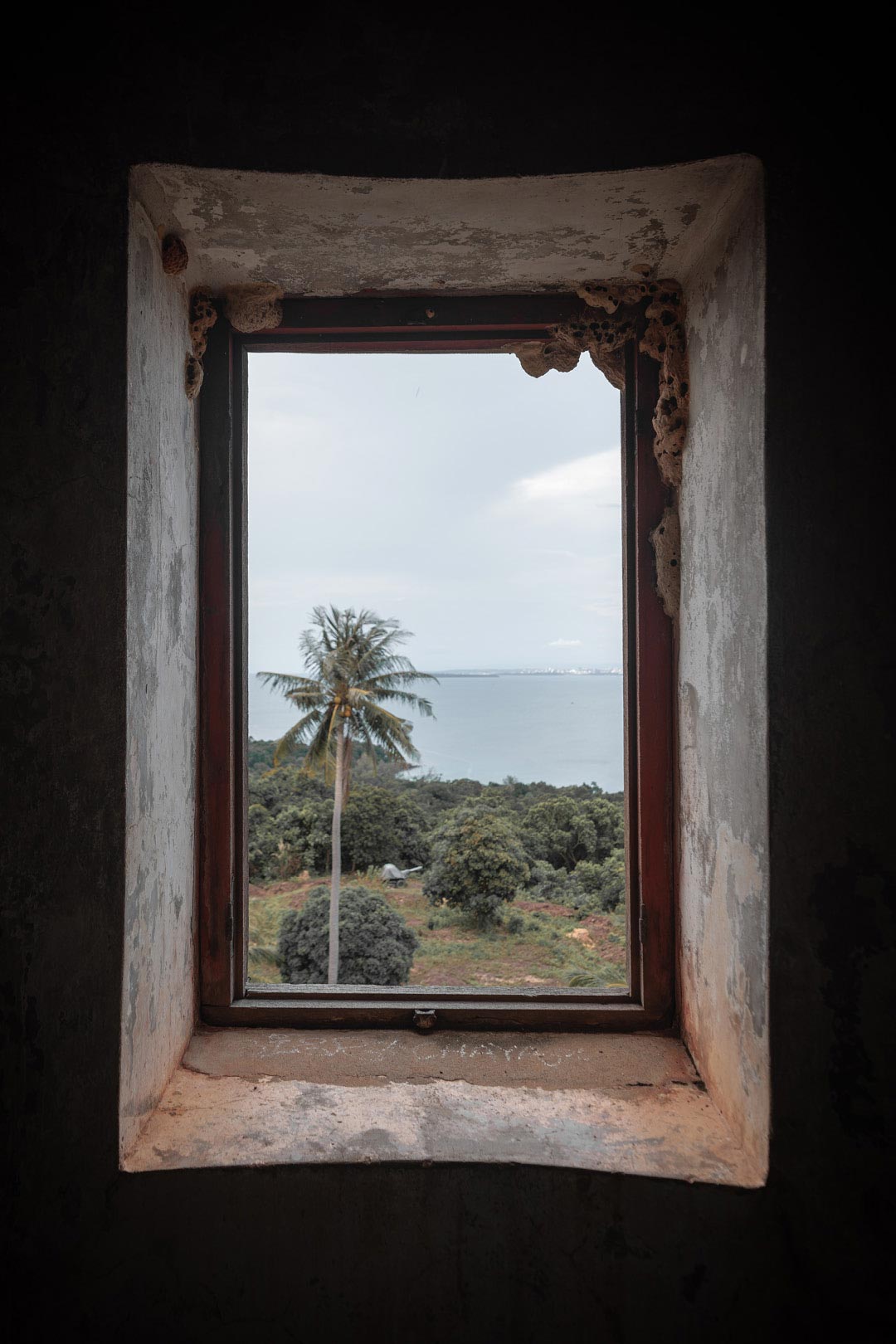
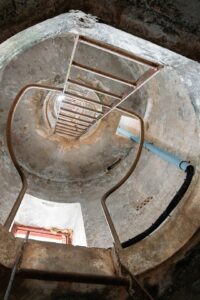
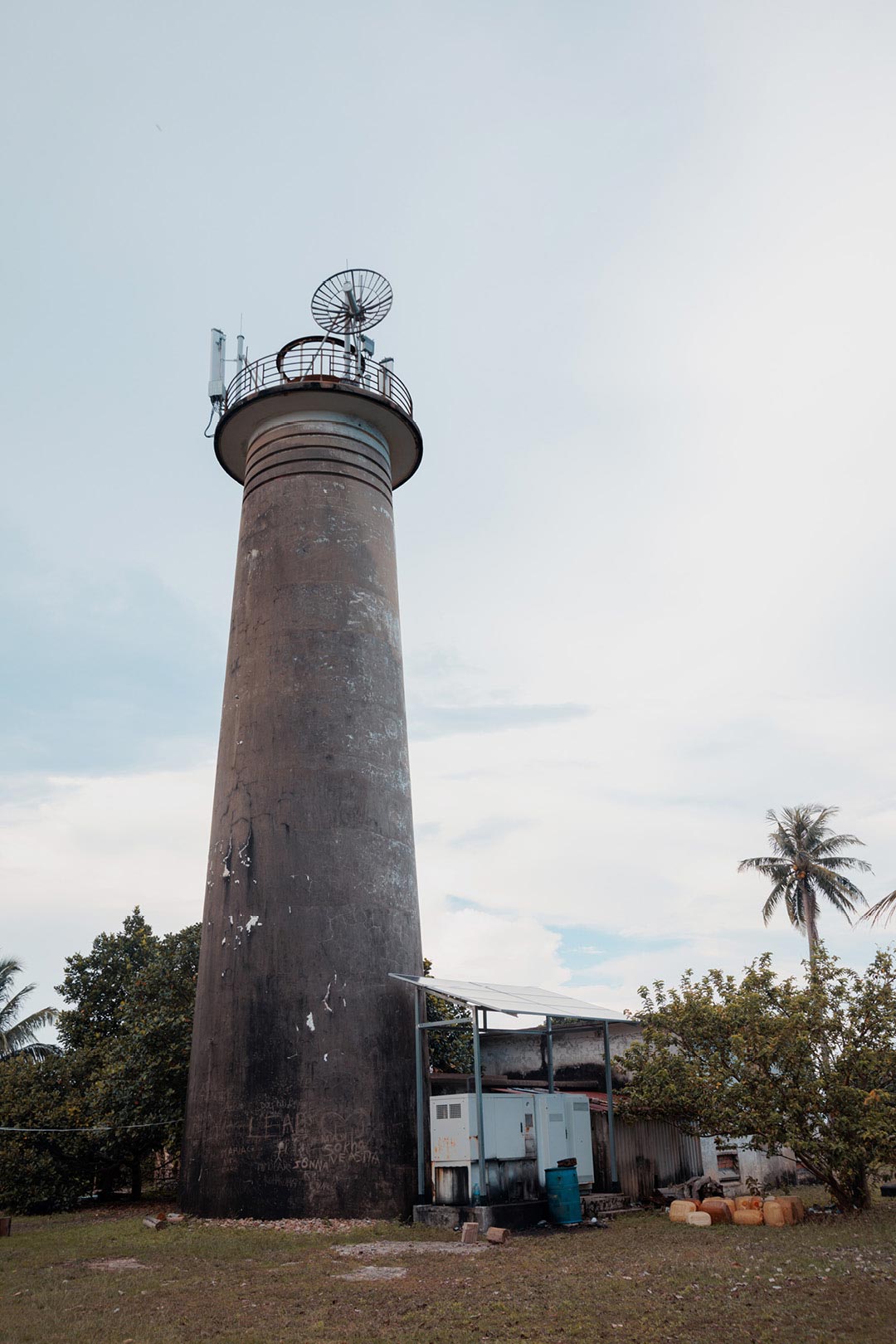
The lighthouse is a known landmark on the island. It’s the last remnant of the French Protectorate, and it is more of a military outpost than a beacon for lost sailors. During the same time, the French built a rudimentary road network through the jungle, connecting various parts of the island, but was progressively abandoned after they left.
Today the network is almost non-existent and the jungle has taken over those paths.
Lazy sunsets
Lazy Beach and Sunset Beach are less than one kilometre apart. On the west coast, separated by a pointy slice of land that sticks out from the coastline. They are two of the most enjoyable spots by lovers of the wilderness. The absence of a pier and the lack of regular transport, makes the choice to go there a deliberate attempt at happy solitude, surrounded by the best of the island’s unspoilt nature.
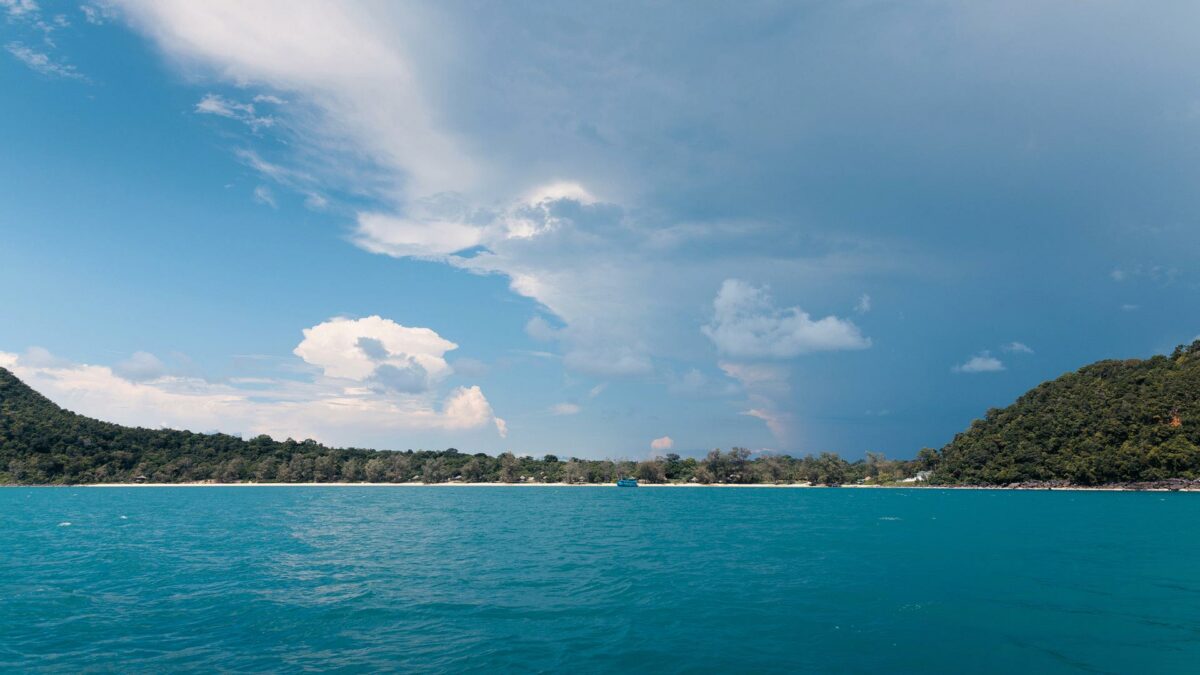
Following down on the same coast there is Buck Beach. Very similar to the ones above but even wilder and more deserted. From here it’s also possible to get to the lighthouse. Just head west to get to the Tri-beach Junction, follow the path, and in with 45 minutes of light, pleasant trekking you’ll be there.
If you rent a boat to get there, you can enjoy the sunset offshore. There is nothing better to end a day than sipping an ice-cold beer while the sun sinks into the water!
M’Pai Bay
On the northern tip of the island there is M’Pai Bay, a place particularly dear to us. We spent a month there, living a stone’s throw from the sea.
M’Pai Bay is a fishing village, very populated compared to other parts of the island. But it’s still a microcosm, where the community is rather small. We’d guess that a little over 100 people live there, but we can’t be certain due to the lack of recent, reliable information on the subject.

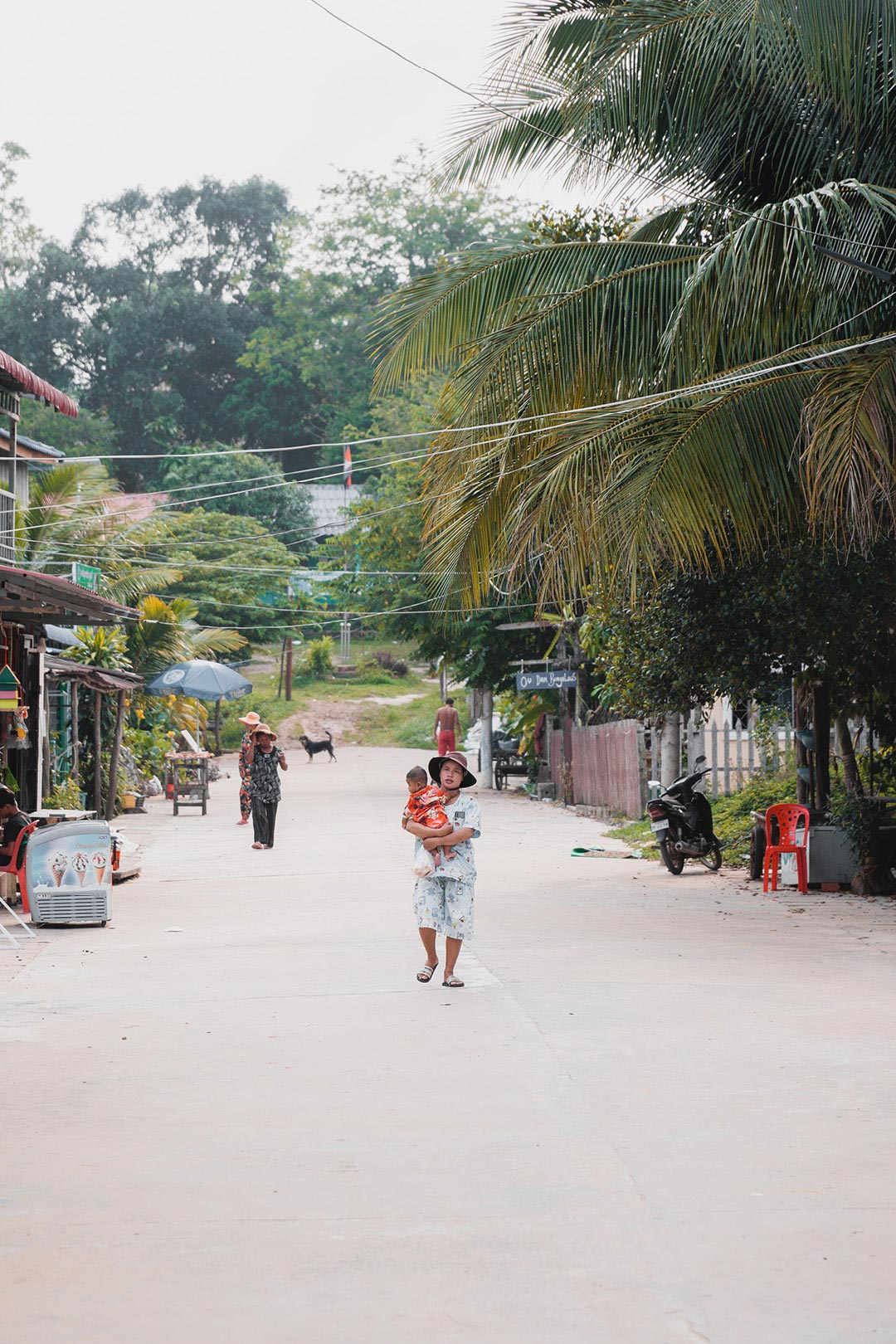
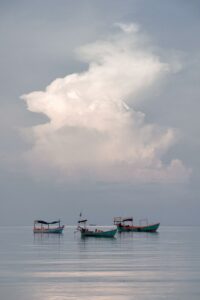
Getting away from the centre, following the shore, you’ll soon get to Long Beach, your personal stretch of paradise where to chill and swim unbothered.
M’Pai Bay is a place of quiet and community life. After a few days everyone knows you, even if it takes you a little longer to know everyone. There is a handful of small shops, a few restaurants that double up as bars or guest houses, and a timeless atmosphere.
If you’re curious about our life on the island we wrote a piece on it, check it out here!
Clearwater Bay
Tipping over to the east side you can reach Clearwater bay. A peaceful, gorgeous white beach where no one will disturb you.



To get there, you can follow the shore until you reach the sandstones. Then you can either do some light rock climbing or turn inward and follow the slim path through the jungle. We did both. But my favourite is the one in the jungle. The air is humid, leaves tickle you, and, let’s be honest, sometimes slaps you. Plus you have a chance at observing the life of the abundant rainforest flora and fauna.
Cashew and coconut trees, ceylon ironwood tree and various species of strangler figs. Amphibians and reptiles, kingfishers, hornbill and ospreys. We even heard of groups of macaques which, apparently, are quite aggressive.
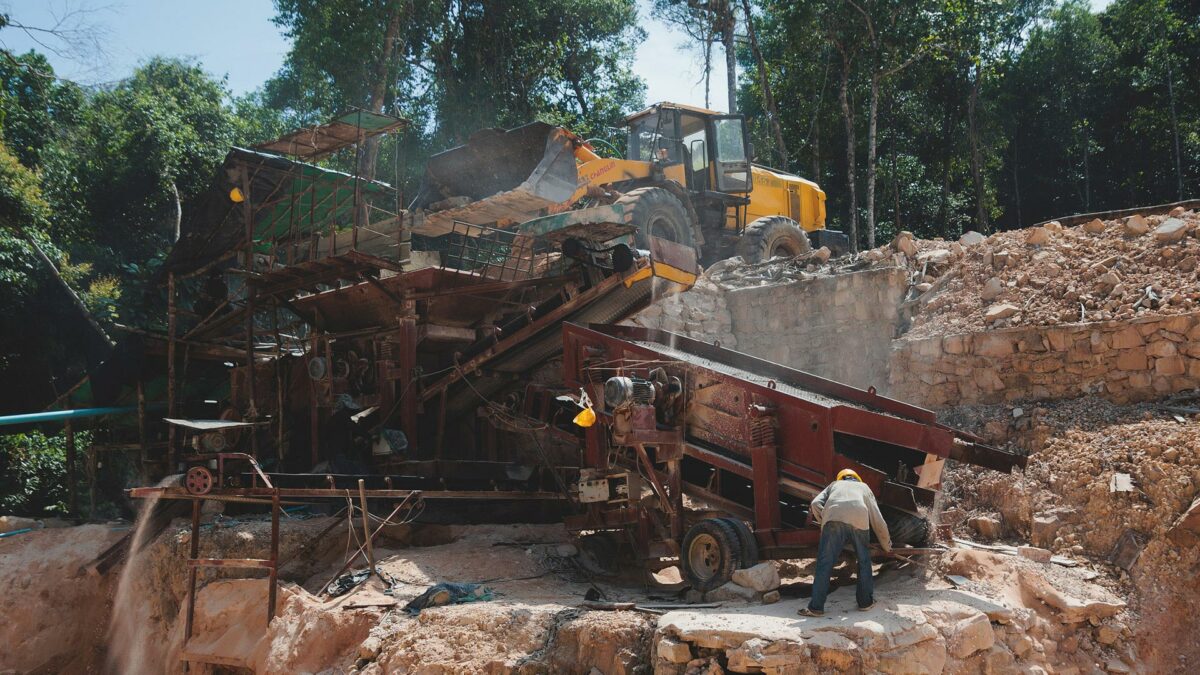
On our way to Clearwater Bay, we noticed that there was a construction site in the middle of the jungle. We learned that it belongs to a group of Chinese entrepreneurs. Possibly the same group made huge investments to build resorts and bars all over the island. We hope Sanloem will not become a second Koh Rong.
The big sister: Koh Rong island
Over the years, Koh Rong built itself quite a reputation for being a party island. At the same time, it is known as a stunning slice of heaven for all sea lovers.
We spent very little time there. Nevertheless it’s a widely popular destination among foreigners and Cambodian and it was an interesting experience.
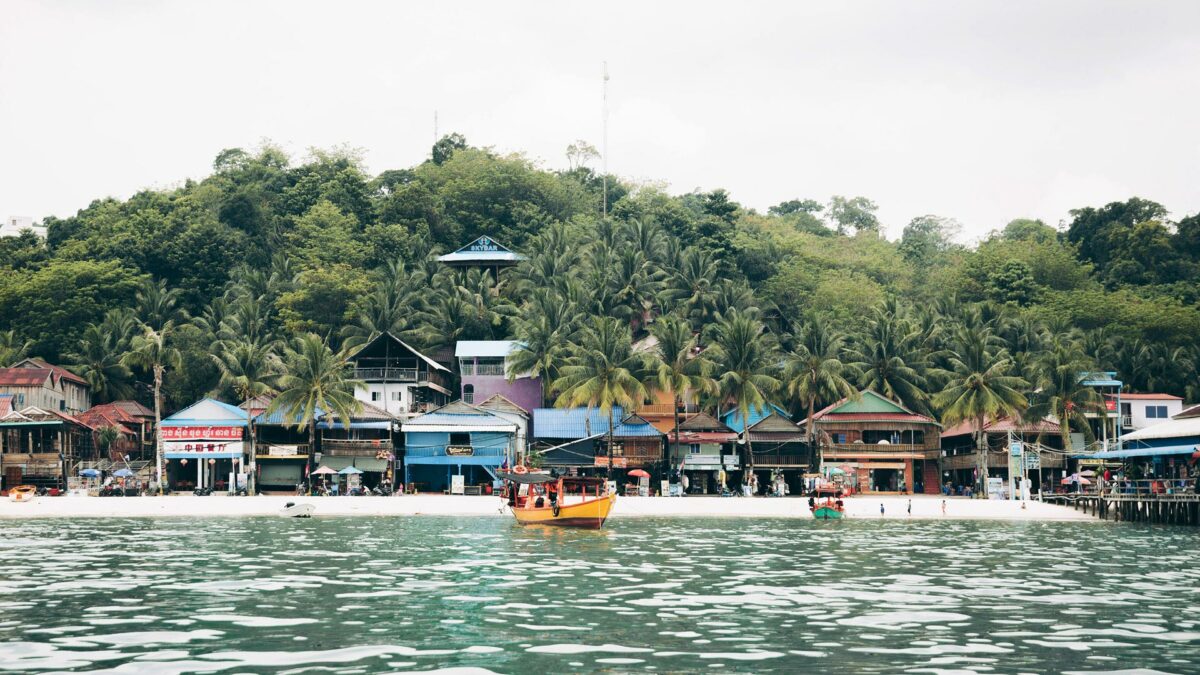
Descending onto the main jetty, you are thrown into the bursting Koh Touch, the island’s main and liveliest tourist area. It’s full of bars, restaurants, shops, boat ticket booths, people selling jewellery, pre-cut mango, and fish on the side of the road. You can see that the pandemic has had a terrible impact on the lives of these people. The island was developed around tourists, but only a small percentage of those came back since the borders reopened.
Walking south, in the opposite direction to Koh Touch, you will encounter the first resorts that begin to dot the coast. This is a good place to look for accommodation if you want to be close to the most touristy hub. Expect a wild nightlife and beautiful nature scapes living together.
After about 25 minutes you’ll get to Long Set Beach, mostly known as 4K beach. It’s a long spread of white sand with enchanting sapphire waters. One of the most popular beaches, where you can take a swim and have a cocktail in the space of a few metres.
Many visit-worthy beaches punctuate the coast, such as Nature Beach, Coconut Beach and Palm Beach. Some of these are accessible only by private boat. Others can also be reached via jungle path, or via paved road, quite long and best travelled by motorbike.
Our Trip
With a long boat and a driver, we crossed a rough and somewhat aggressive sea to get to Koh Rong. We spent a couple of days there.
The effects of the pandemic were visible. Koh Rong appeared to be more abandoned than its little sister.
When walking on the beach there were not so many people. We crossed some locals through the jungle, then a half abandoned resort with writing in Mandarine. We realised slowly that the island was in deep transformation and things must have slowed down during the pandemic. It’s a weird feeling.
We rented a bungalow, owned by a kind Cambodian lady, a quiet one away-ish from the hustle and bustle. Here trees, flowers and a few monkeys framed a dozen very nice wooden houses. There were seashell wind chimes on our terrace, a white lace net against mosquitoes above our bed, and a small hose to clean our feet before leaving the shoes at the door.
But since our arrival we felt that something was off. Despite the loud music, the shouting of the shopkeepers and the air made electric by the crowd of young people eagerly waiting to start partying, there was something that didn’t add up in the air, in the bars, in people’s dull faces.
Below the surface
We spent two days exploring the island on foot, by day and by night, venturing everywhere we could. We often stumbled upon places that seemed to have been studied down to the smallest detail, where nature had been sculpted and bent, transformed into a mirror that would send back the reflection of the most unbridled luxury: golf cars and fields, jet skis, and western lawns. There is something sinister about the fiction of perfection.
It seems that, even just five years ago, the island was very different. It was a popular destination for backpackers and beach lovers, a simple place that retained its local charm and life. In reality, the story is more complicated than it initially appears. With some research, we discover that, since 2008, the Cambodian government has leased the island to a business consortium. It’s a 99-year contract, with the idea of encouraging its development.
The consortium is led by a Cambodian-Chinese tycoon who, partnership after partnership, has transformed Koh Rong into an island of resorts, casinos, golf and polo fields and a series of naval/military outposts. Considering how burning environmental issues are in Cambodia, it is not difficult to understand what is happening in Koh Rong. In particular illegal logging, the savage displacement and destruction of indigenous villages without adequate compensation.
We had no idea about any of this, we didn’t know what it was before we made some research. Yet we could read it on the faces of the locals, feel it in their energy. There was a kind of dissatisfaction mixed with a deep sadness that, at least for us, was impossible to ignore.
It was the first time feeling so deeply uncomfortable for us.
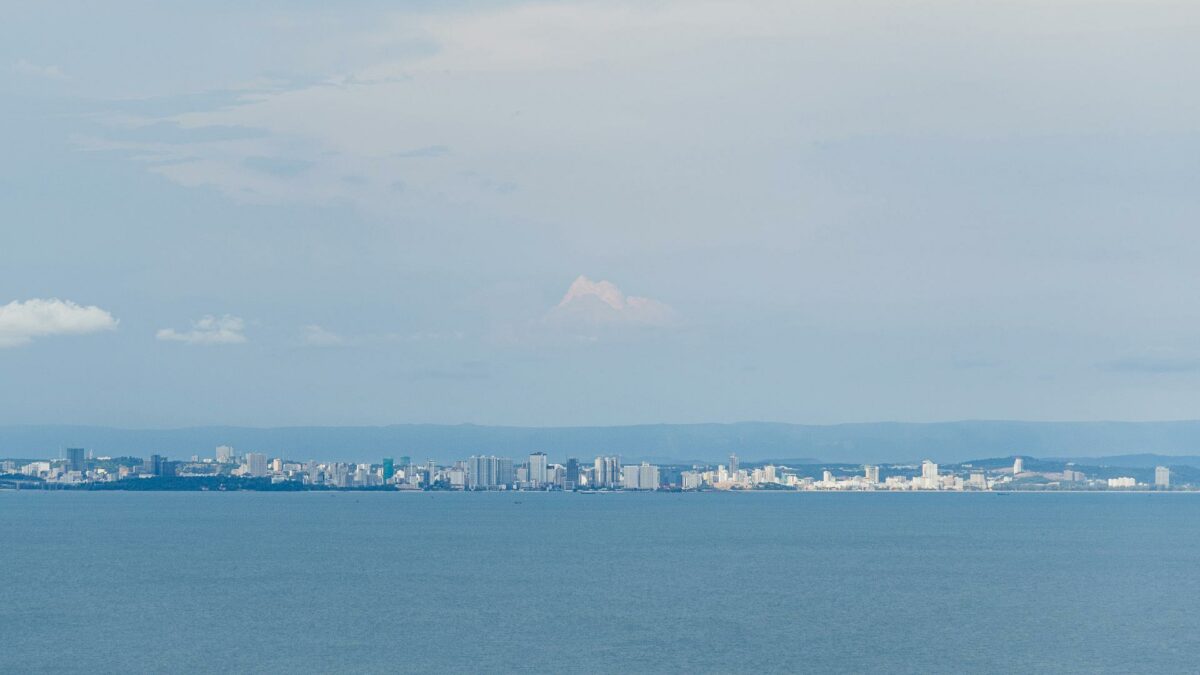
We fear for what the future holds for this island. We are aware that talking about it here may not make much of a difference, but perhaps it can contribute to a more conscious tourism. And if it can, even in the smallest, we need to talk about it.
The truth about trash
One of the biggest problems on the island, and in Cambodia is the same epidemic that has hit the rest of South-East Asia. It has been happening slowly but steadily since the 50s, booming over the last two decades. We are talking about plastic, and the subsequent problem of waste disposal.
Many tourists are horrified by the amount of rubbish polluting the streets and nature. They are unaware that many of their home countries, send a large part of their waste over her to be disposed of, knowing that almost none of them own the technology to reprocess it safely.
In true green washing style, this is enough to meet Western “eco-goals” in terms of waste production and management.
If you take a walk anywhere in Cambodia, including our lovely Koh Rong Sanloem, you’ll know how bad it is. We didn’t have the heart to take a proper photo of it, but it is very much real; you can actually have a glimpse of it the background of some of our pictures.
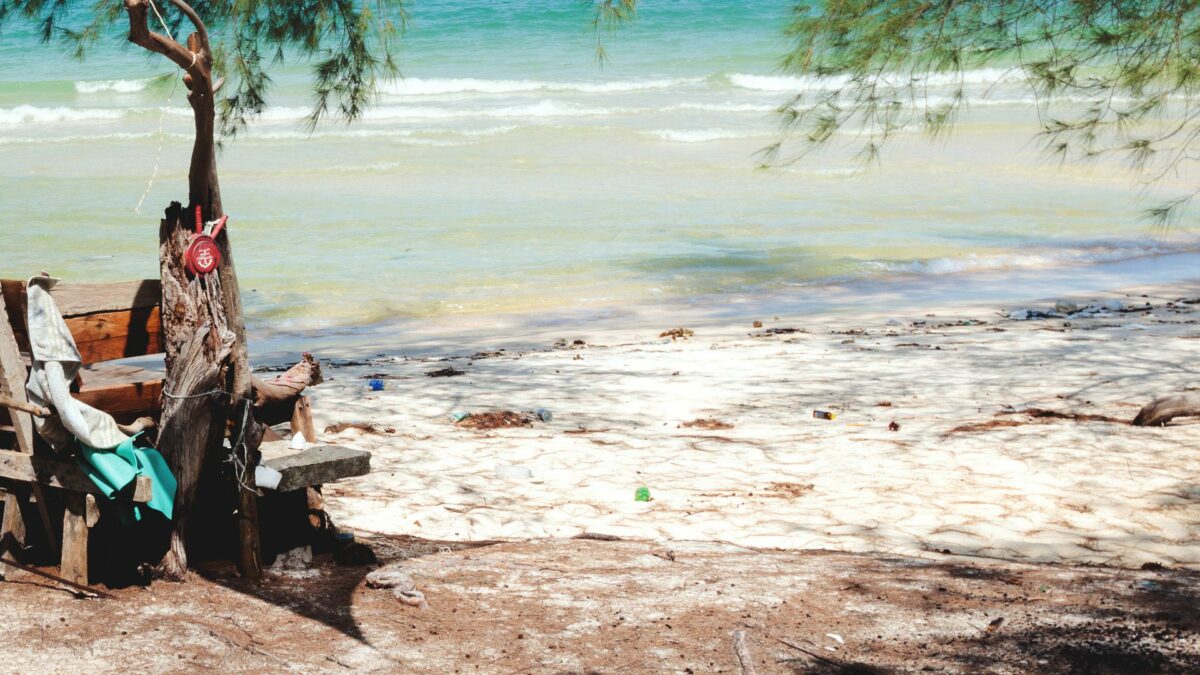
From polystyrene food containers to snack wrappers. Plastic bottles and straws (and here we need to digress: taking a tour around these places, truly helps to understand why it was an important step to ban single-use plastic, even if it doesn’t seem so to the West).
It’s a painful sight, for the eyes and the heart. Every now and then someone organises a clean-up day, involving both inhabitants and tourists. Yet, it’s not enough compared to the river of plastic consumed daily. It is not enough considering the tsunami that arrives from the mainland or even from as far as The Philippines every time there is a storm.
It is simply tragic, and every time you pass by someone who is burning their trash, your heart tightens a little, knowing that, even if they knew how bad it was, they wouldn’t have a better alternative to turn to.
The thing that is clear is that there are not enough infrastructures to absorb the quantity of waste. There is not enough education on the general level of society to acknowledge the gravity of the issues. FInally, not enough laws in place to regulate the use of plastic by big corporations. There are a few NGOs, one of them being Plastic Free Cambodia, that actively try to make a difference. They work with schools and teachers and they do make a difference. But, with no surprise, you’d need a lot more people on board for this to work.
You’d need the whole country, and then you’d need the surrounding ones. Then you’d need the West to have the integrity to step up and take responsibility, stopping once and for all to see places and people as a capitalist venture.
We often walk around thinking about ourselves, what we can take from this place, this experience, this world. We go about our life superficially, stepping carelessly over places and their history.
Instead, we want to think about what we can give, not what we can take. We want to open our eyes, understand where we are. Asking questions and not be afraid to hear the answers. We need to be awake, be aware, acknowledge our privilege. It is crucial to cultivate the courage to face life’s inherent complexity and hypocrisies. To learn to practice more understanding and less judgment, because it’s about being fair and not about being right.
Lights out at the end of the day
After our experience, we can say that we thoroughly enjoyed our time on Sanloem, with all the adventures it allowed us to have. We explored, got to know some pretty cool people and made new friends. We learned and grew with each passing day.
As in for Koh Rong, we won’t hide that it wasn’t easy for us to connect with the place, a place that is not any less intensely beautiful and exciting.
We write with an open heart, the same one we use to make sense of where we are. And, with these words, we do not want to discourage travellers from visiting these islands, far from it. Please visit, and do so responsibly!
Our article is meant to be an honest, rounded and comprehensive portrait of a beautiful and complex place, which should be experienced with awe and awareness in equal measure.
We do not believe in glossy, instagrammable places ready to be described in three lines full of flattering adjectives. We believe in real places, where people and situations coexist in the complexity of this world. Even if the resulting image is not a perfect, polished photograph.
To polish is, in a way, removing details, layer, complexity. And we believe that the world is neither white, nor black, nor pink, but a chaotic and wonderful kaleidoscope of real life.

This is what we want to talk about, these are the places we want to see.
So go, to Koh Rong, to Sanloem, wherever. Go and bring your energy, and don’t forget to stay aware and be amazed.
If you haven’t done so yet, take a look at our article about life on the island!
If you enjoy this article don’t hesitate to pin it!
